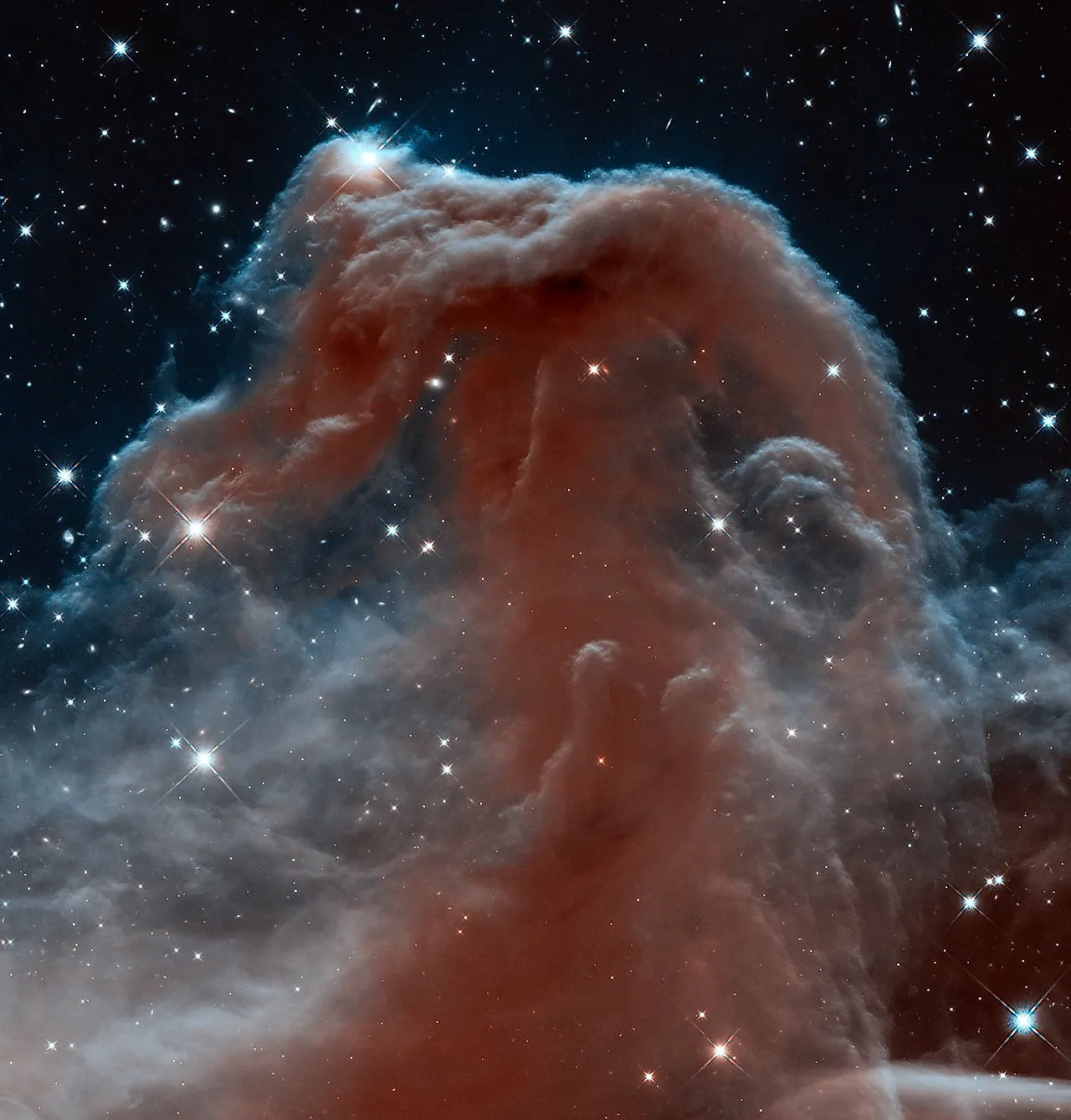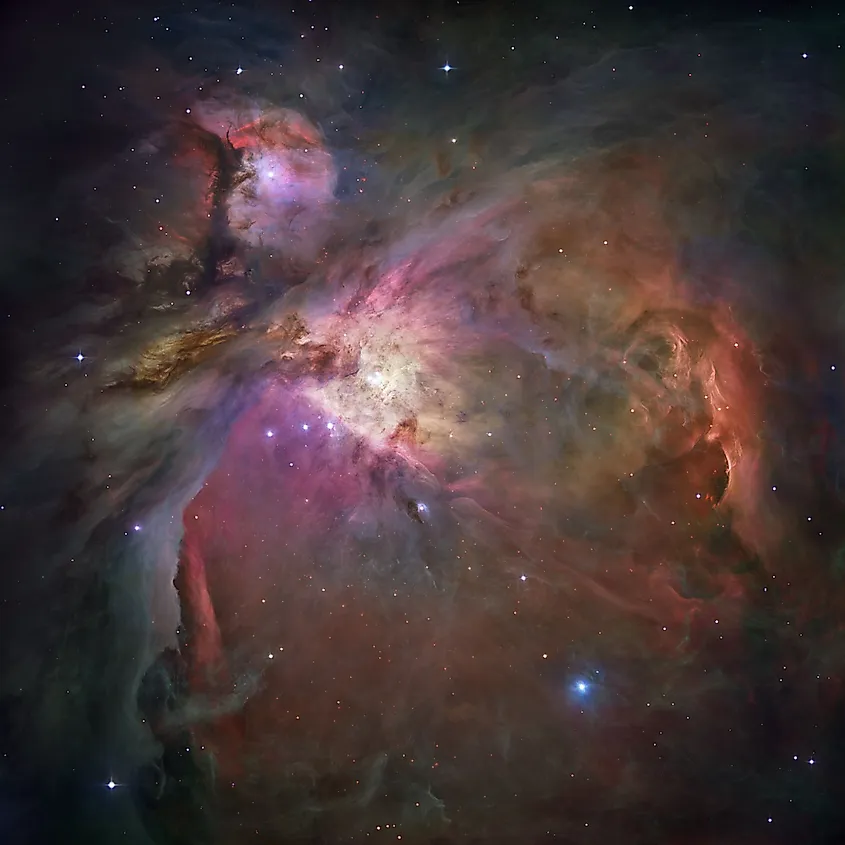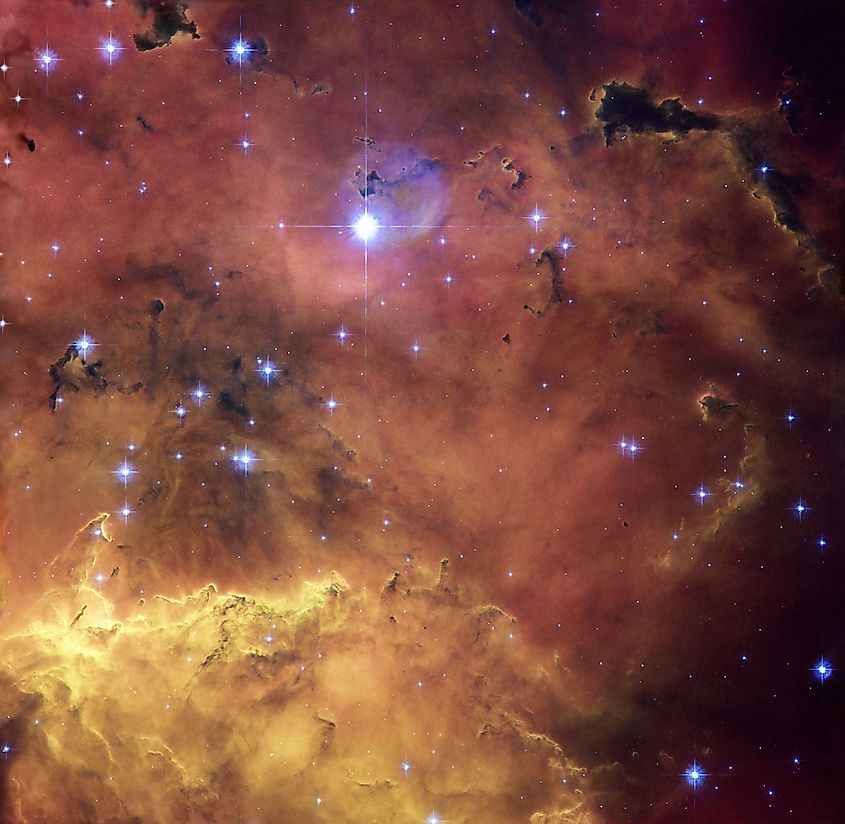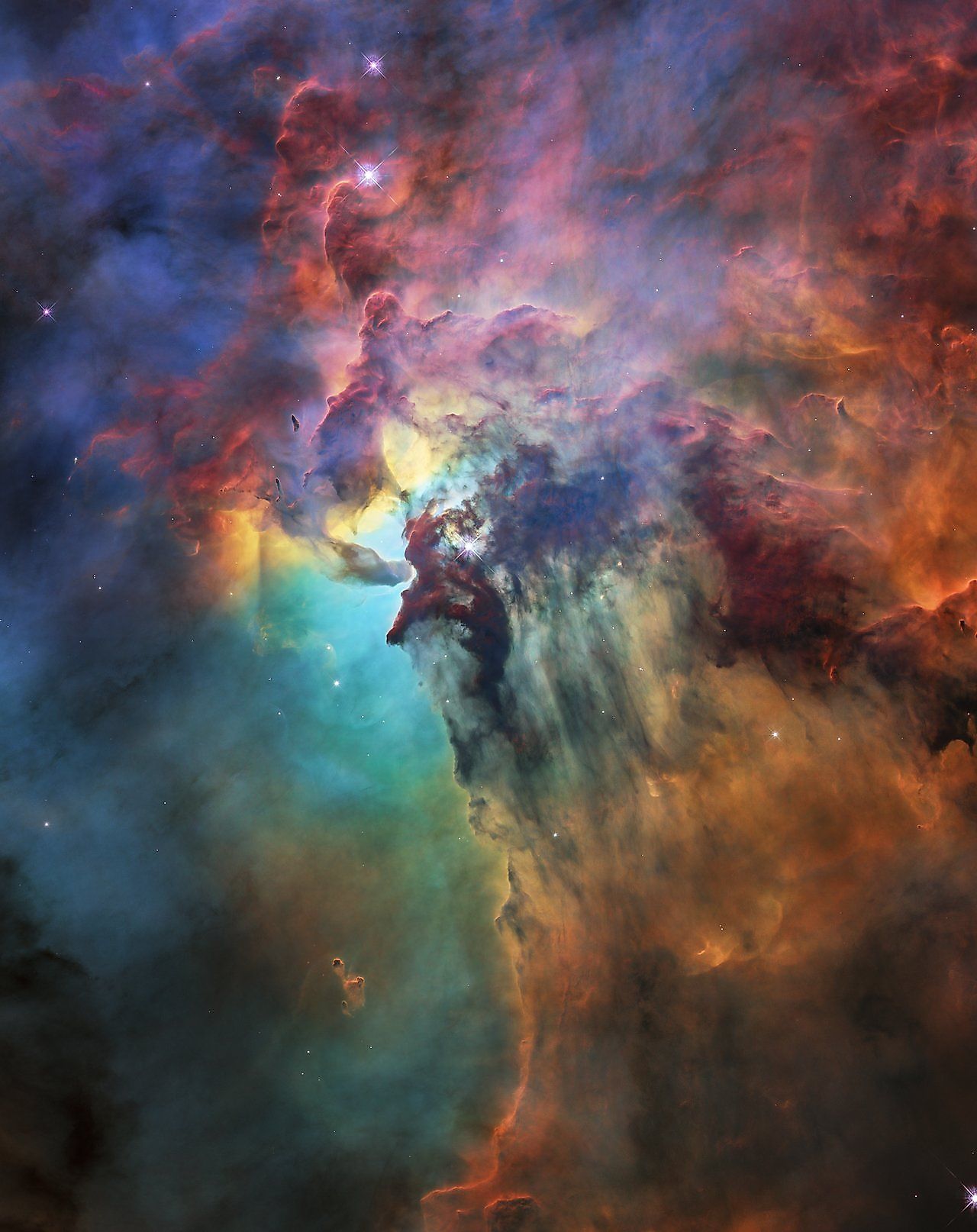
The Interstellar Medium
- Rather than being empty, the space between the stars contains an abundance of gas and dust called the interstellar medium
- The interstellar medium is almost entirely made of hydrogen and helium
- The density of the interstellar medium has an effect on what we can and cannot see in space
The universe appears to be mostly empty. The night sky is filled with stars, but there is still a tremendous amount of distance between them. However, the space between the stars is not entirely empty. Interstellar space is saturated with gas and dust called the interstellar medium. This medium consists almost entirely of hydrogen and helium, along with trace amounts of heavier elements. Hydrogen makes up about 90% of the interstellar medium, while helium makes up nearly all the remaining 10%. By mass, the interstellar medium is 70% hydrogen, 28% helium, with the remaining 2% being various heavy elements such as carbon, oxygen, and nitrogen. About 99% of the interstellar medium is gas, while 1% is dust.
How The Interstellar Medium Forms

The Interstellar medium is composed of the atoms and molecules from countless stars across the galaxy. Stars are born within the densest areas of the interstellar medium in regions called nebulae. Every time a star forms, the amount of material in the interstellar medium decreases by a small amount. However, the interstellar medium never ceases to exist through star formation, and that’s because stars eventually give that material back to the surrounding space. Every star, regardless of its size and mass, will eventually cease to exist. When small mass stars end their lives, they become a planetary nebula, dispersing their material into the surrounding space. Meanwhile, high mass stars eventually explode as mighty supernovae, also dispersing their material into space. Thus, the interstellar medium never disappears as the material is eventually returned.
The Interstellar Medium And Observations

Since the interstellar medium saturates all of space, it has a noticeable impact on how we observe distant objects. Where there is more gas and dust, there’s a higher likelihood that incoming light will be scattered or blocked, resulting in a phenomenon known as extinction. The interstellar medium tends to scatter blue light while allowing red light to pass through in a process known as reddening. Particular wavelengths of light will be absorbed and scattered by the interstellar medium, making it difficult to observe certain objects and processes that are further than a few hundred light years. For example, hydrogen generally absorbs far-ultraviolet light, making it nearly impossible to observe this form of light from a distance. It is possible to observe this wavelength of light so long as its source is only a few hundred light years away, yet beyond that, the interstellar medium will block it. The effects of reddening is one of the reasons why many distant nebulae appear red, as the interstellar medium will scatter blue light and allow red light to pass through. This also means that, in order to observe distant objects in space, astronomers heavily rely on observations in infrared light.











